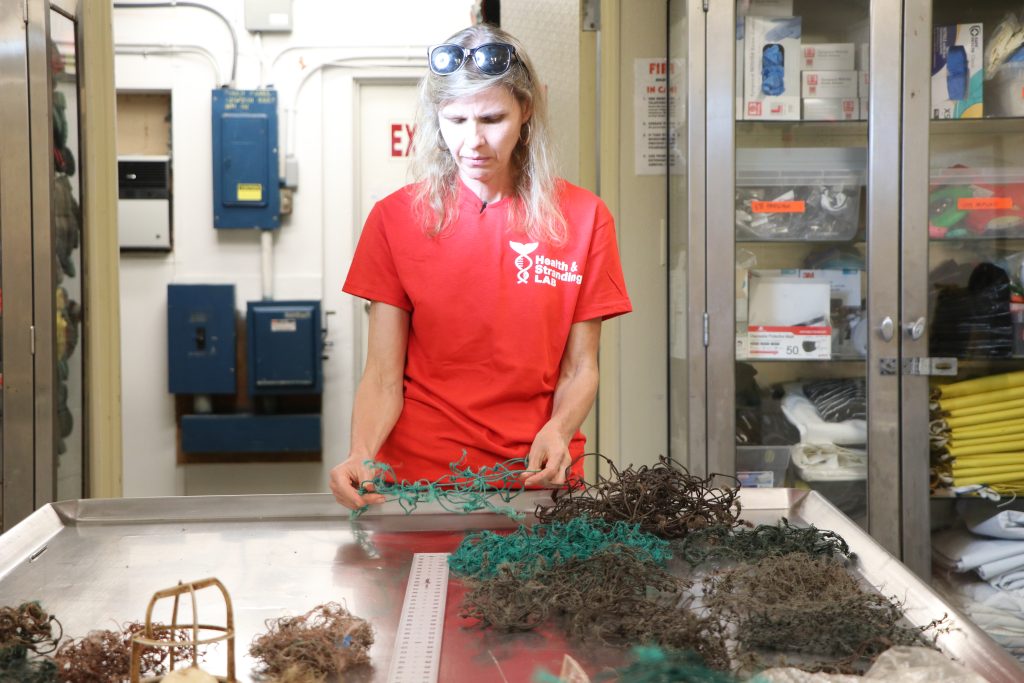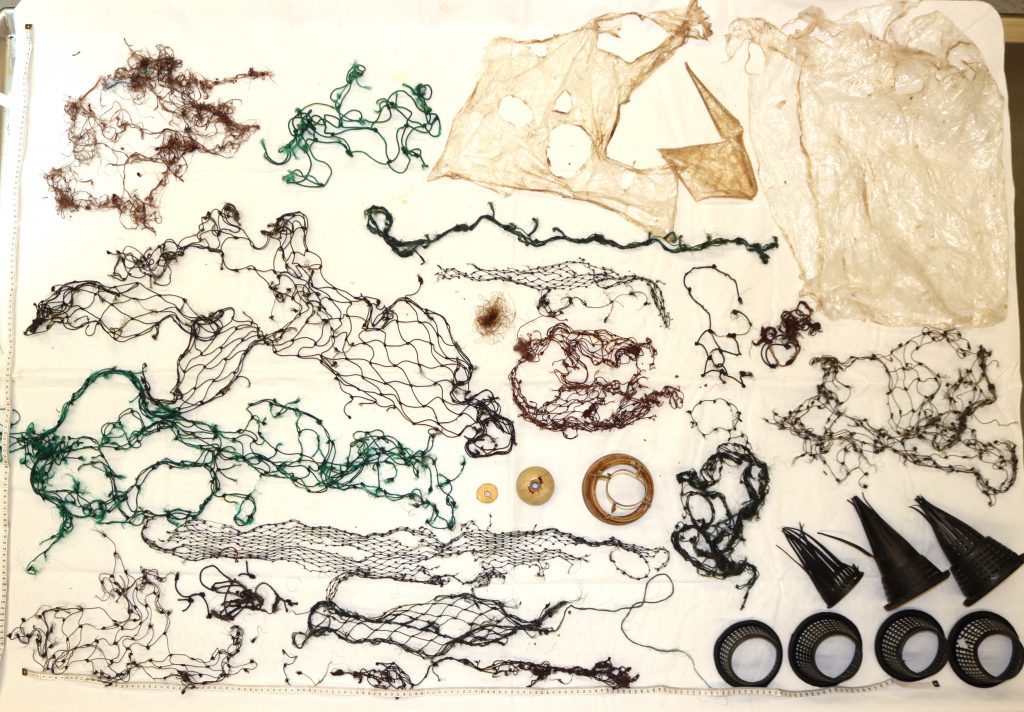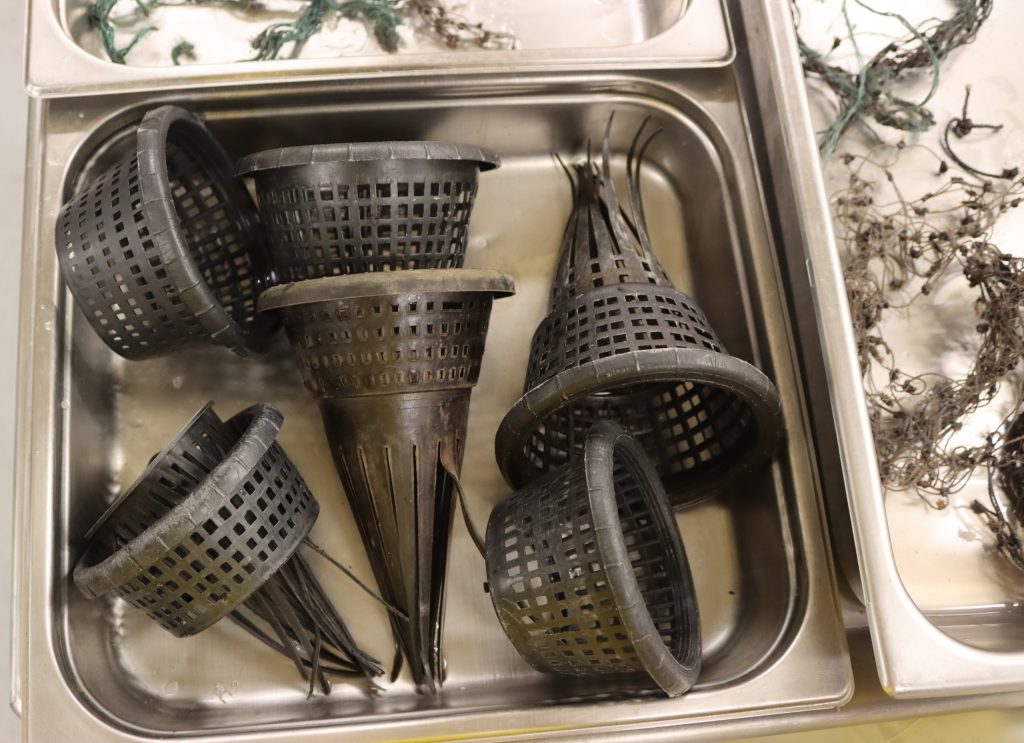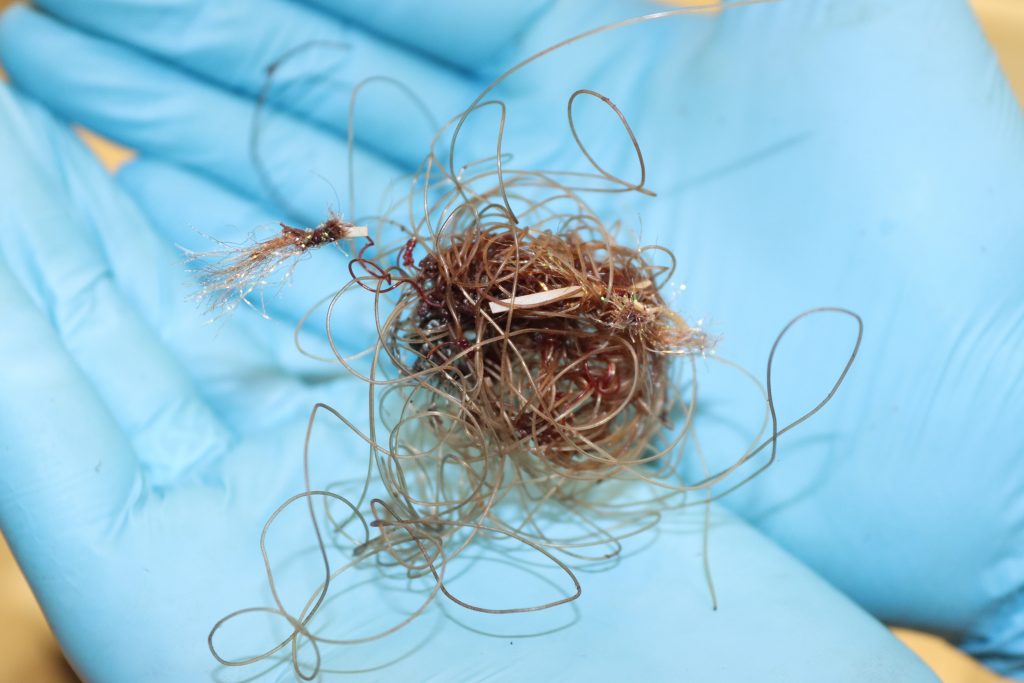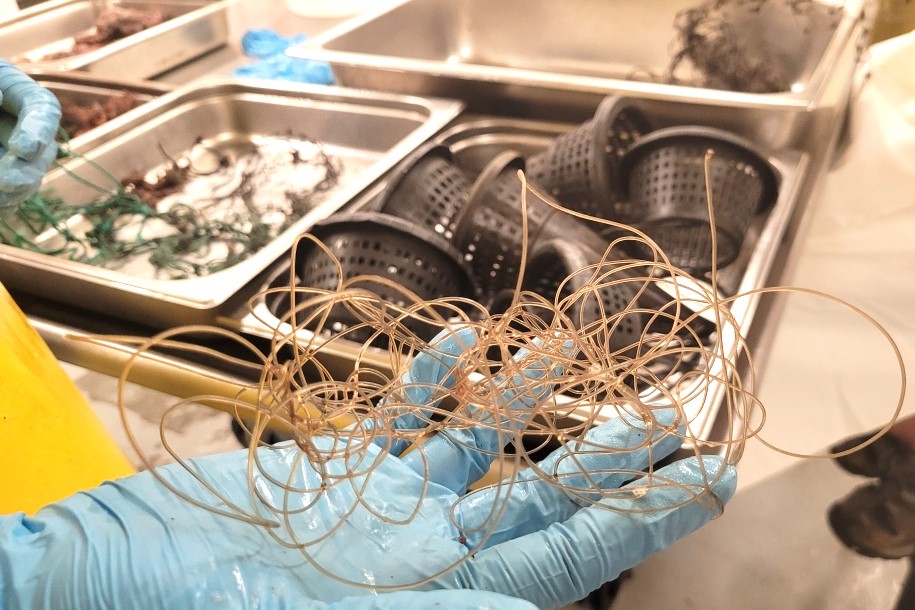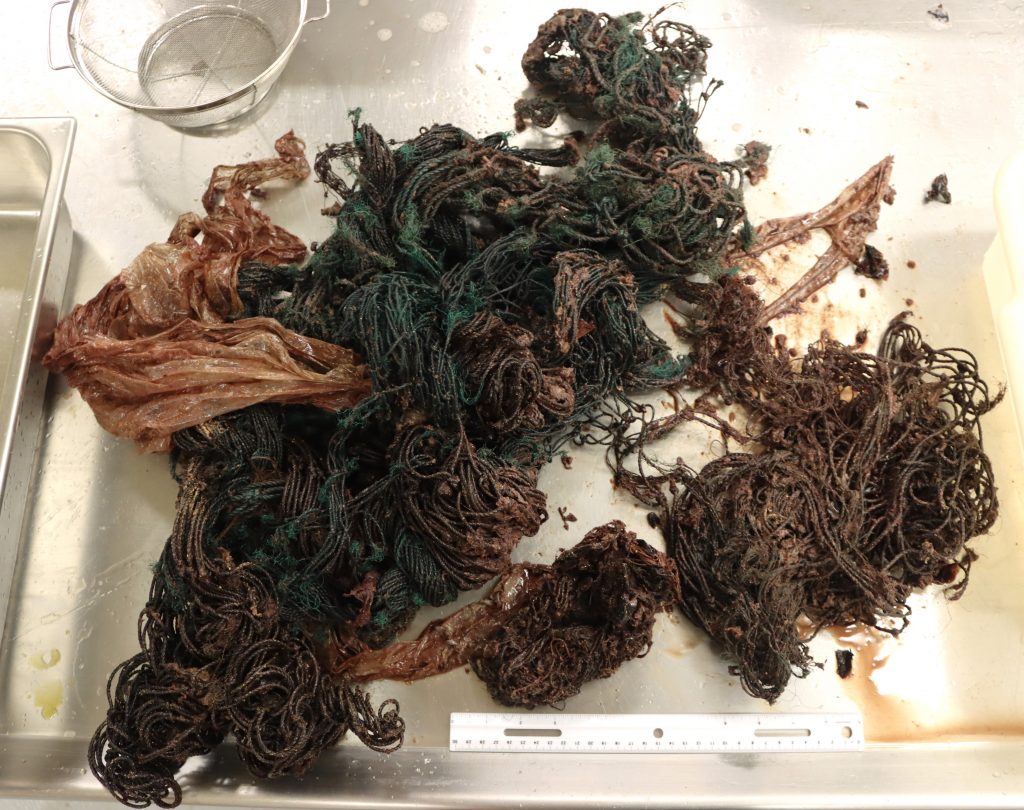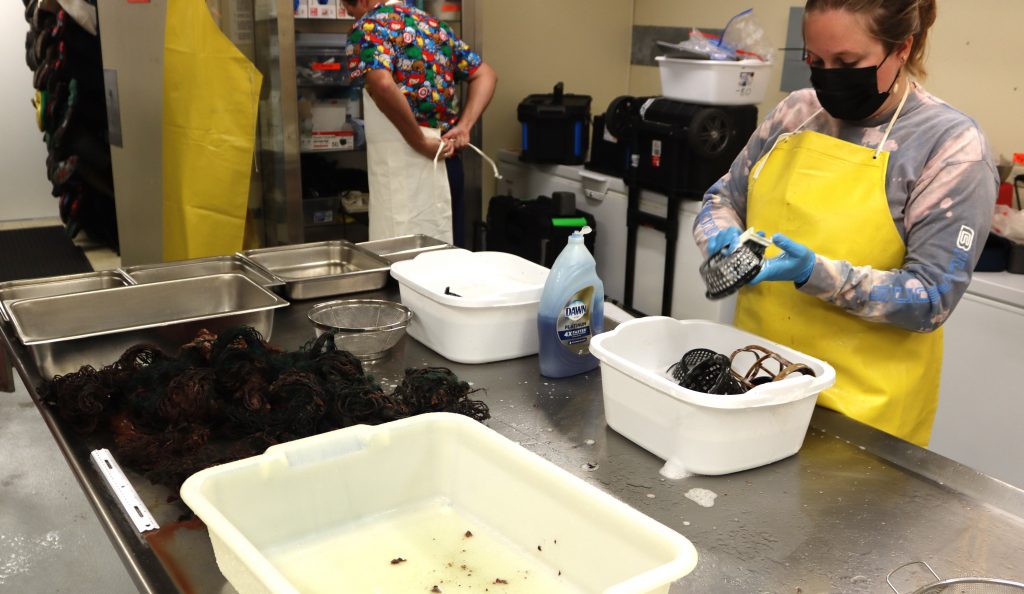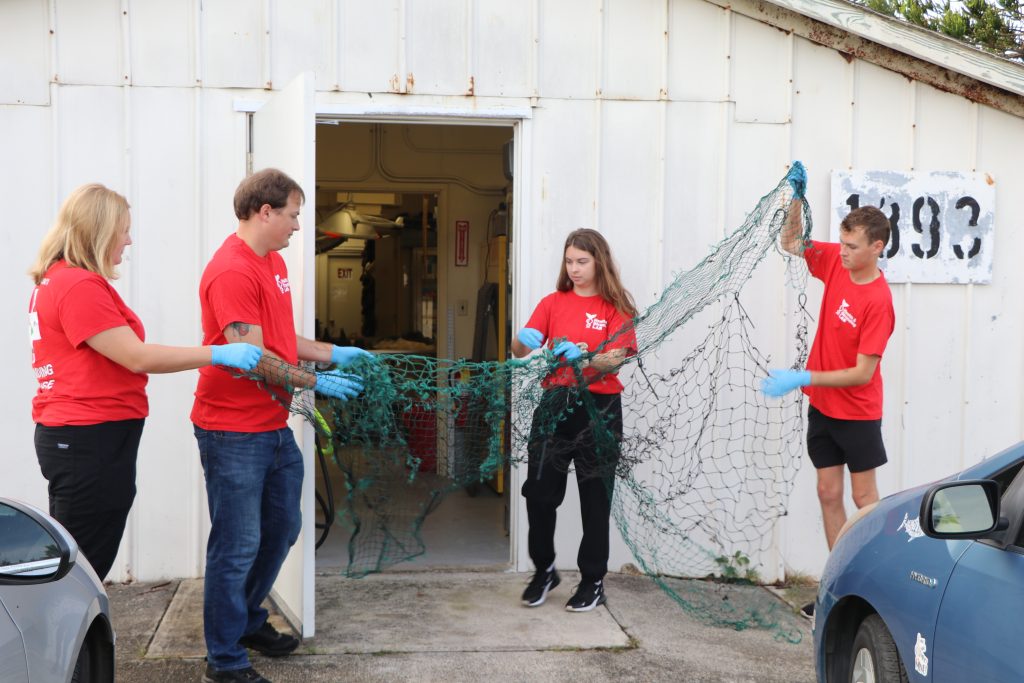Marine debris contributed to death of sperm whale found at Lydgate Beach on Kaua‘i

Researchers at the Health and Stranding Lab spent 15-hours trying to find clues about the death of a 56-foot-long sperm whale that washed up Friday on the reef in front of Lydgate Park on Kaua‘i.
Their conclusion? Marine debris was at least a contributing cause of death.
While the 120,000-pound mammals’s stomach contained what was expected — squid beaks, fish skeletons and other prey remains — a “major finding was the number of manufactured items,” said Dr. Kristi West, Director of the Health and Stranding Lab at the University of Hawaiʻi at Mānoa.
The researchers found at least six hagfish traps, seven types of fishing net, at least two types of plastic bags, a light protector, fishing line and a float from a net.
West said these items “may have contributed to its death and are certainly disturbing.”
The initial examination of the whale was limited because of its immense size. The removal of the whale from the beach required four excavators. Itʻs body was buried at a secret location to prevent desecration.
Researchers were not able to examine the full expanse of the mammal’s huge stomach, “which is why we think that it’s likely there was additional material we didn’t recover,” West said. “The size of the opening from the intestinal tract into the stomach is relatively small and there is certainly substantial enough volume of foreign objects to cause a blockage.”

Researchers looked for signs of abnormalities to the partial organs they examined, and no irregularities were initially observed, with the exception of the gastrointestinal tract. However, they collected a number of samples from different organ systems for follow-up testing, including disease screening.
“The presence of undigested fish and squid lends further evidence of a blockage,” West said. “This is the first sperm whale in Hawaiian waters where we have seen this kind of ingestion of discarded fishing gear and nets.”
Edward “Luna” Kekoa, recreational fisheries program manager with the state Division of Aquatic Resources, said man-made items have been in the ocean for a very long time.
“We hope we can learn from this,” he said. “Every few days we hear about another whale, or dolphin, turtle or monk seal entangled in fishing gear or lines. At an absolute minimum, let’s prevent any more gear, plastic bags and other items from getting into the system.”
The UH researchers found what appears to be monofilament fishing line, with three flies tied to it, which suggests all of the pollutants the whale swallowed did not originate in the ocean but came from land as well. Massive, male sperm whales transit the ocean over thousands of miles, so there’s no way to tell where the materials originated.
“We are only able to examine a small number of our dolphins and whales that die in our waters, and we think that each individual we are able to examine represents as many as 20 other animals who are likely to ultimately die from these types of impacts,” West said. “It’s heartbreaking to see this kind of destruction in an individual animal.”
The examination was a rare opportunity to document what may have contributed to the animal’s death and also to learn more about threats that sperm whales face in Hawaiian waters.”
The preliminary examination on Kaua‘i was possible because of the collaborative efforts of the County of Kauaʻi and the Office of the Mayor, the Division of Aquatic Resources, the state Division of Forestry and Wildlife, NOAA’s Pacific Islands Regional Office and cultural practitioners.
Marine mammals are culturally significant to the people of Hawaiʻi and are recognized sentinels of ocean health. An understanding of the threats faced by protected species, such as whales, is critical for effective conservation and management.
Researchers rely entirely on public reporting of marine mammals that are distressed or deceased, which is vital to understanding causes of mortality and identifying and evaluating threats to protected species in Hawaiʻi and the Pacific.
The public is encouraged to report distressed, injured and dead marine mammals to the NOAA hotline at 1-888-256-9840.



